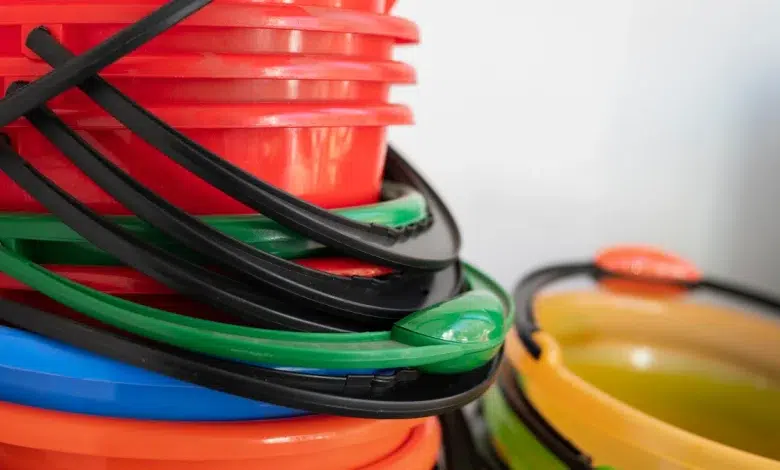The Bucket System is Back: Hacks for Bathing and Cooking During Water Cuts

Water scarcity and intermittent supply disruptions have forced many South Africans to revisit old coping mechanisms. Among these, the bucket system (once widely used for sanitation) has resurfaced as a practical approach for managing daily water needs during frequent water cuts. While the bucket system for sanitation was largely eradicated due to hygiene concerns and dignity violations, using buckets for water storage and conservation during outages is now an essential survival skill.

RELEVANT ARTICLE: How to Manage Water Outages at Home: A Complete Step-by-Step Guide
Understanding the Bucket System in Context
Historically, the bucket sanitation system involved collecting human waste in buckets under toilet seats. This system was phased out starting in the early 2000s due to its unhygienic nature and violation of human dignity, with government programmes allocating billions to replace buckets with waterborne sanitation. Despite progress, some formal settlements still rely on bucket toilets, particularly in provinces like the Free State.
Today, the term “bucket system” has evolved. It no longer refers to sanitation but rather to using buckets for water storage and rationing during municipal water interruptions or load shedding. This practical adaptation helps households manage limited water supply for essential activities like bathing and cooking.
Why the Bucket System is Relevant Again
South Africa’s water infrastructure faces challenges, including aging networks, droughts, and maintenance backlogs. Many municipalities experience scheduled water cuts or intermittent supply, especially in drought-prone regions. In response, households and communities have revived bucket-based water management to:
- Store water during supply hours for later use
- Minimise water wastage by controlling usage
- Facilitate basic hygiene and cooking needs during outages
ALSO READ: Joburg Water Crisis: Reservoirs at Critical Levels, Outages and Low Pressure Persist
Innovative Hacks for Bathing Using Buckets
Bathing during water cuts can be challenging, but buckets make it manageable with simple, water-wise techniques:
- Two-Bucket System: Use one bucket for soapy water and another for rinsing. This prevents contamination and conserves water.
- Reuse Grey Water: Collect rinse water in a bucket to flush toilets or water plants, maximising water use.
Cooking Tips During Water Shortages
Cooking with limited water requires planning and creativity:
- Pre-soak Ingredients: Soaking rice, beans, or lentils in a bucket overnight reduces cooking time and water use.
- One-Pot Meals: Prepare stews or soups that require less water and fewer pots, reducing cleaning water needs.
- Use Minimal Water: Steam vegetables or use pressure cookers to cut down water and energy consumption.
- Collect Rainwater: If possible, harvest rainwater in buckets for cooking and cleaning purposes.
Water Conservation Beyond Buckets
While buckets help manage water during cuts, broader water conservation remains critical. Government campaigns encourage:
- Fixing leaks promptly
- Installing water-saving devices
- Practising water-wise habits such as turning off taps while brushing teeth or washing dishes
- Exploring alternative water sources like rainwater harvesting and greywater reuse
Practical Water-Saving Tips for Smaller Living Spaces
Living in apartments or smaller homes can make water storage challenging, but with some creativity, residents can still prepare effectively:
- Use Stackable Water Containers: Opt for slim, stackable water containers or collapsible water bags that fit into cupboards or corners without taking up much floor space.
- Repurpose Household Items: Clean large plastic bottles, buckets, or basins can be used to store water under beds or in closets. Label them clearly for drinking, cooking, or cleaning.
- Window Sills and Balconies: Use these outdoor spaces to store covered water containers safely, ensuring they are shielded from direct sunlight to prevent algae growth.
- Multi-Purpose Buckets: Use buckets with lids that can double as stools or storage boxes, saving space while storing water.
- Water Storage Furniture: Consider furniture designed with built-in water storage compartments, such as benches or ottomans, ideal for small homes.
- Daily Top-Up Routine: Instead of storing large quantities, collect smaller amounts of water daily during supply hours, rotating and using it efficiently to avoid stagnation.
Innovative Water Conservation Technologies for South African Households
South Africa is embracing technology to tackle its water crisis, with several innovations helping households and municipalities optimise water use:
- Smart Water Meters and IoT Sensors: These devices provide real-time data on water consumption, helping detect leaks and unusual usage patterns early. Municipalities and homeowners can use this data to reduce wastage and manage supply efficiently .
- Rainwater Harvesting Systems: Collecting rainwater from roofs into tanks or barrels provides an alternative water source for gardening, cleaning, and even flushing toilets. Compact rooftop systems are available for urban homes .
- Greywater Recycling: Systems that treat and reuse water from baths, sinks, and washing machines for irrigation or flushing toilets reduce freshwater demand significantly. Small-scale greywater units are suitable for residential use.
- Solar Water Heaters: Using solar energy to heat water reduces electricity consumption and encourages water-saving habits by limiting long showers .
- Water-Efficient Appliances: Installing low-flow taps, showerheads, and dual-flush toilets can reduce water use without sacrificing comfort. Smart appliances with water-saving modes are increasingly accessible.
Safety and Hygiene Considerations
Using buckets for water storage demands strict hygiene to prevent contamination:
- Use clean, covered buckets to store water
- Avoid dipping hands or dirty objects into stored water
- Regularly clean buckets with disinfectant
- Use separate buckets for drinking water and washing
Plan Ahead
The resurgence of the bucket system as a water management tool is a testament to South Africans’ resilience and innovation amid ongoing water challenges. While the bucket sanitation system was rightly eradicated for health and dignity reasons, the bucket as a water storage and rationing device is now a vital ally during water cuts.
By adopting simple hacks for bathing and cooking with buckets, households can maintain hygiene and nutrition even during supply disruptions. Coupled with broader water conservation efforts, these strategies help communities navigate South Africa’s water scarcity realities with dignity and resourcefulness.




